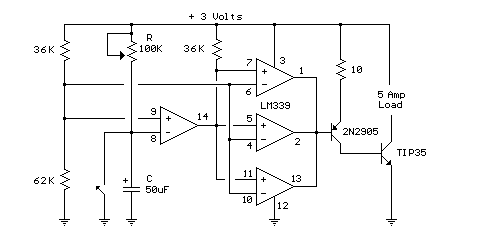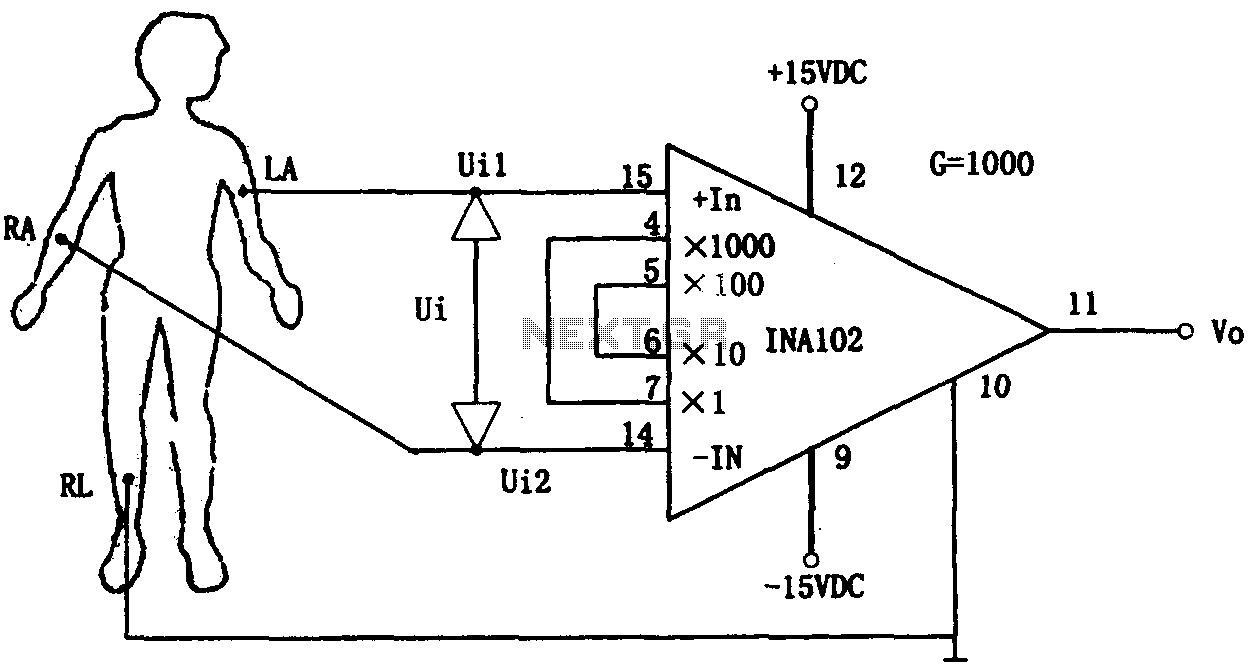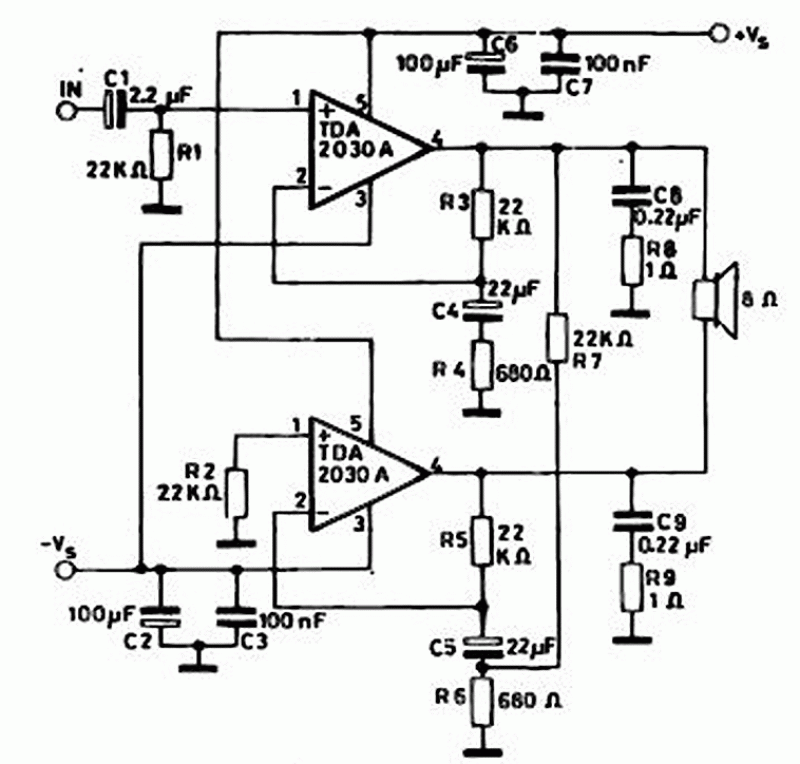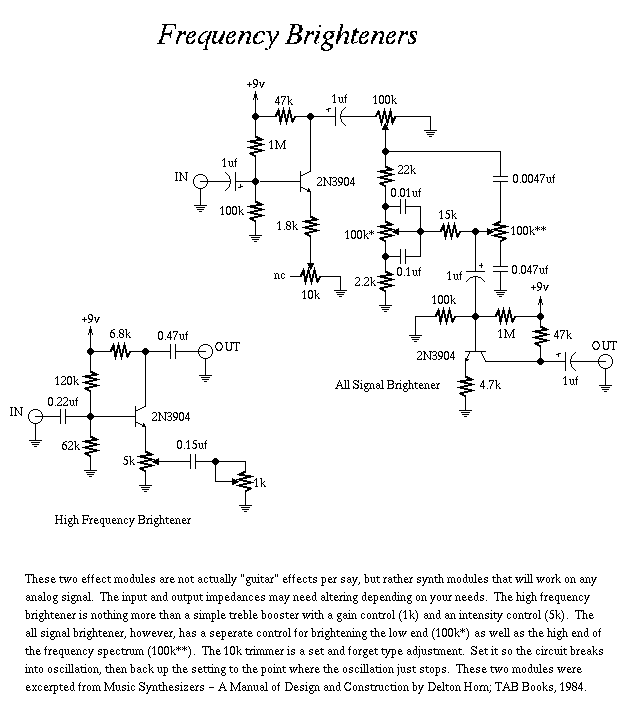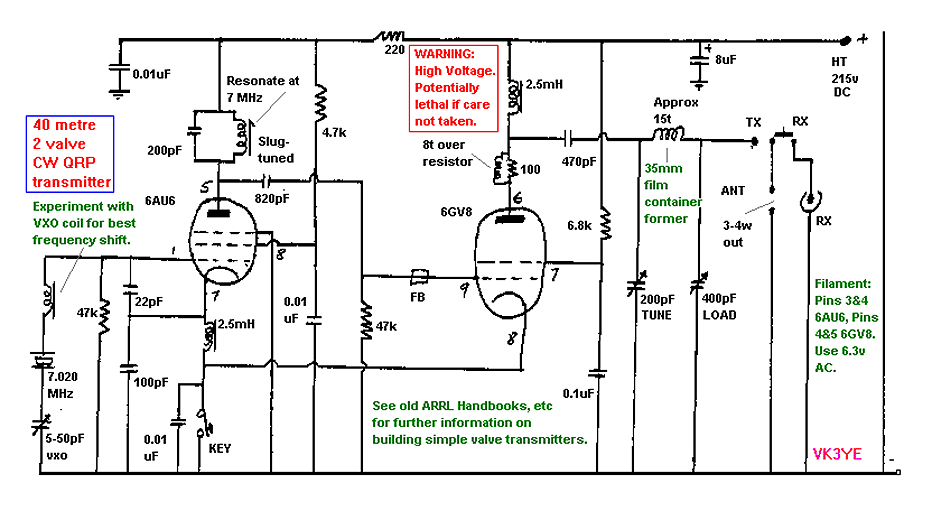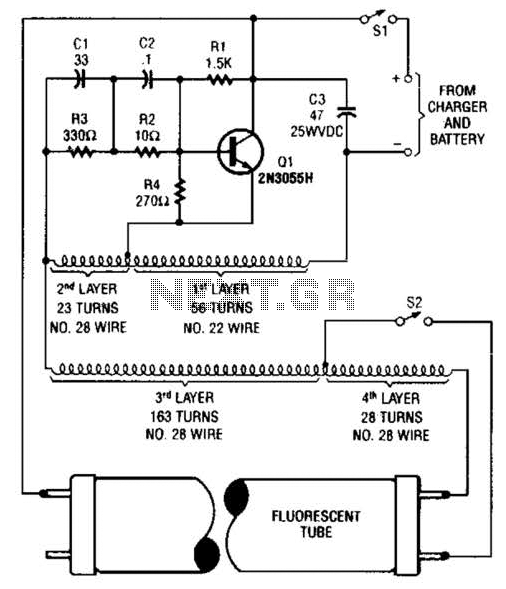
FM / FSK 27MHz transmitter circuit
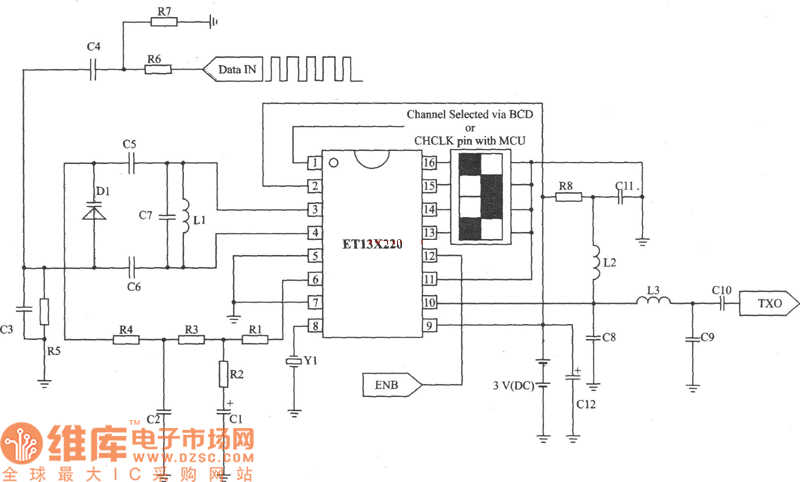
ETl3X220 is a cost-effective single-chip transmitter that operates via RF communication. It supports up to 10 channels and is ideal for applications such as wireless mice, keyboards, and other communication devices. The main technical features include: - Analog FM or digital FSK modulation mode; - Channel spacing frequency of approximately 30 kHz; - Supply voltage range of 2.3 to 3.6 V; - Current consumption of 8 mA, with a low-power mode consuming 5 µA.
The ETl3X220 transmitter chip is designed to facilitate reliable wireless communication in various consumer electronics. The chip's dual modulation capabilities—analog FM and digital FSK—allow for flexibility in application, catering to different transmission needs. The choice of modulation can impact the range and robustness of the communication link, making it suitable for diverse environments.
With a channel spacing of approximately 30 kHz, the ETl3X220 can effectively manage multiple communication streams without significant interference, making it a practical choice for multi-device environments such as home offices or gaming setups. The supply voltage range of 2.3 to 3.6 V ensures compatibility with a wide range of power systems, allowing for integration into battery-operated devices where power efficiency is critical.
The current consumption of 8 mA during active transmission is relatively low, which is advantageous for battery life in portable applications. Furthermore, the low-power mode, which reduces consumption to just 5 µA, extends operational time significantly, making the ETl3X220 particularly suitable for devices that require long battery life, such as wireless input devices.
In summary, the ETl3X220 is a versatile and efficient single-chip RF transmitter that meets the demands of modern wireless communication applications, providing a balance between performance and power efficiency. Its design considerations make it an excellent choice for manufacturers looking to incorporate reliable wireless capabilities into their products.ETl3X220 is a low-cost single-chip transmitter chip which is connected through RF. It can provide 10 communications. And it is suitable for applications of wireless mouse, keyboard and other communication products. The main technical features are as follows: ¬Analog FM or digital FSK modulation mode 5 ¬Channel spacing frequency is about 30 kHz ; Supply voltage is 2. 3 ~ 3. 6 V; ¬Current consumption is 8 mA and low-power mode is 5 A. 🔗 External reference
The ETl3X220 transmitter chip is designed to facilitate reliable wireless communication in various consumer electronics. The chip's dual modulation capabilities—analog FM and digital FSK—allow for flexibility in application, catering to different transmission needs. The choice of modulation can impact the range and robustness of the communication link, making it suitable for diverse environments.
With a channel spacing of approximately 30 kHz, the ETl3X220 can effectively manage multiple communication streams without significant interference, making it a practical choice for multi-device environments such as home offices or gaming setups. The supply voltage range of 2.3 to 3.6 V ensures compatibility with a wide range of power systems, allowing for integration into battery-operated devices where power efficiency is critical.
The current consumption of 8 mA during active transmission is relatively low, which is advantageous for battery life in portable applications. Furthermore, the low-power mode, which reduces consumption to just 5 µA, extends operational time significantly, making the ETl3X220 particularly suitable for devices that require long battery life, such as wireless input devices.
In summary, the ETl3X220 is a versatile and efficient single-chip RF transmitter that meets the demands of modern wireless communication applications, providing a balance between performance and power efficiency. Its design considerations make it an excellent choice for manufacturers looking to incorporate reliable wireless capabilities into their products.ETl3X220 is a low-cost single-chip transmitter chip which is connected through RF. It can provide 10 communications. And it is suitable for applications of wireless mouse, keyboard and other communication products. The main technical features are as follows: ¬Analog FM or digital FSK modulation mode 5 ¬Channel spacing frequency is about 30 kHz ; Supply voltage is 2. 3 ~ 3. 6 V; ¬Current consumption is 8 mA and low-power mode is 5 A. 🔗 External reference
